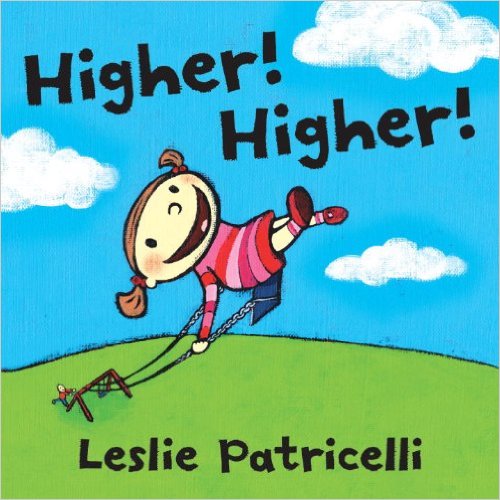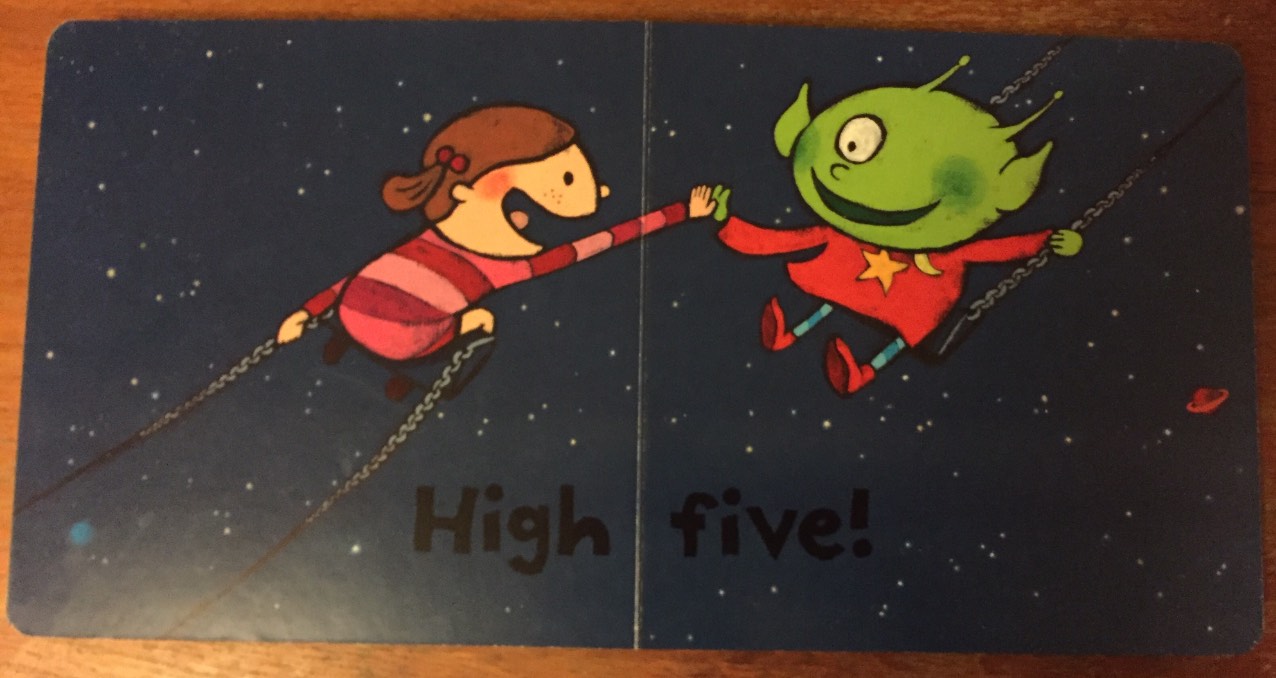Higher! Higher!
I read a decent amount of fiction and I also read a decent amount of nonfiction. But nowadays I really read a lot of kids’ books.
At first reading to children seems like, well you get some kids’ books and you just go read them a book, that’s all there is to it. The medical establishment strongly recommends it and it seems like reading to children might also be one of the key ways that parents pass on their advantages to their children, so read books to your kids. That stuff makes it seem like reading to kids is a “yes or no” thing. If you read to your kids then you are a good parent and if you do not you are a bad parent. So at first I just thought, “Okay I’ll do it!”
But after a while I started thinking, what am I trying to achieve with this reading experience? What should I be focusing on? What should I be trying to get the kid to do? And especially, what sort of book is a good one to read to kids?
Rather than lay out some abstract principles, I am going to claim that the single best book for the 0 years old to 2 years old range is Higher! Higher!.

At this point you might be thinking, is this guy seriously writing a book review that is orders of magnitude longer than the book itself? The answer is yes.
But let me explain why this book is a good one. I have different tactics to suggest for the different parts, and I will quote literally all the words in the book as we go along.
Rising Action
As an adult, you might find the first nine pages somewhat repetitive.
- The cover shows a girl, probably named Tia, on a swing, saying:
Higher! Higher!
- The title page shows the girl’s father pushing the girl, and it repeats the title of the book:
Higher! Higher!
- On the first “real page” of the book, the father is pushing the girl already a dangerously high amount, with the swing-ropes already above horizontal, and yet the girl requests:
Higher! Higher!
- The girl is now swinging higher. She is approximately the same height as a giraffe, and saying:
Higher! Higher!
- The girl is now swinging higher. She is approximately the same height as a building. A balloon, dog, cat, mountains, and a game of checkers are visible. She requests:
Higher! Higher!
- The girl is now swinging higher. She is approximately the same height as the previously-visible mountain. There is a distant airplane. She is saying:
Higher! Higher!
- The girl is now swinging higher. She is hanging out with two airplanes, and continues to request:
Higher! Higher!
- The girl is now swinging higher. She is in space, maybe low earth orbit. There’s a rocket in the distance, and she says:
Higher! Higher!
- The girl is now swinging higher. She is right next to the rocket, which naturally has a monkey inside. The girl demands:
Higher! Higher!
Okay, so you probably detect a pattern here. The first eighteen words are all the word “Higher”. This might drive you nuts at first. But I think it is a good thing.
The point of reading books to a kid is not really to get them used to the process of listening to a book being read. It’s to get them excited about reading books themselves. And I do not think there is an easier book for a small child to read than this book. If you can only remember one word in your whole brain, as long as it’s the word “Higher”, you’re going to be able to follow along with a significant chunk of this book. Even read entire pages. Which is pretty exciting if you’ve never done that before, in your life.
Another piece of good design is the page-to-page continuity. For adults it is taken for granted that when you turn the page of the book, the next page is supposed to represent the same story, but just a little bit more in the future. For little kids, that isn’t necessarily obvious. But when you see a distant airplane, the girl requests “Higher”, and then the airplane is close up, that mapping becomes a bit more clear. As the reader you can either engage with this, talking a bit about the stuff in the picture before you turn the page, or skip through it, depending on your mood.
A final aspect of this first phase of the book that I really like is that the main character is a girl, and the plot includes many “traditionally boy” things, like airplanes, traveling to outer space, and a rocket.
Climax
Now comes the part to really stress your toddler’s reading skills. Different words. The climax is spread over three pages.
- The girl finally swings as high as she can swing, and sees… an alien kid who is also on a swing.
Girl: Hi! Alien: Hi!
- The girl and alien exchange a high five.
High five!
- They bid a fond farewell.
Girl: Bye! Alien: Bye!
The neat thing about this exchange is that each of these utterances has an associated hand gesture. I find it is easier to teach little kids words when they come with an associated “thing to do”. So you can wave hi, do a high five with your kid, and wave bye.
High fives are particularly underrated. At some point you can explain where the “five” comes from and get them into the math of having five fingers a little bit. Children seem to love it. It’s hard to believe the high five was only invented in the late 70’s.

An interesting question is whether this alien is male or female. Or “other”. I like to ask my kids to see what they think.
Denouement
Three mercifully wordless pages follow. The girl swings back down into the atmosphere, towards the playground, and is caught by her father. On the very last page, the girl turns to her father and has a last request:
Again!
Of course, your child is quite likely to interpret this “Again!” as a reminder, that they should also turn around and ask you plaintively, “Again?”
Such a clever engagement hack by the author. Like the Netflix widget that just quietly nudges you to watch the next video in the series. But this time, it’s a good thing, right? Because reading to your kid is good for them and you want to get them excited to read another book?
So there you have it. Higher! Higher! is a strong book for small children. The key is that you can do more than just read it to them. You can get them engaged with the words, and nudge them bit by bit into reading it themselves, even if they have never done that with any book before.